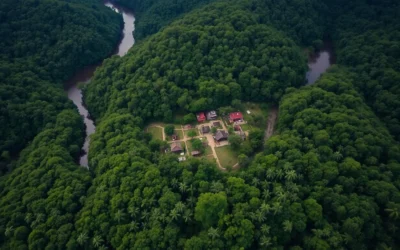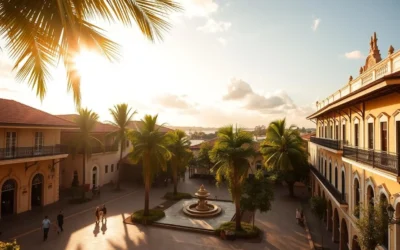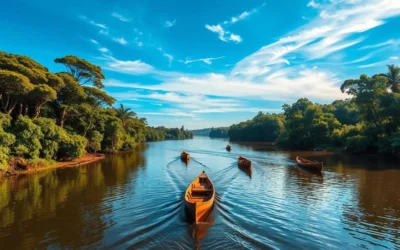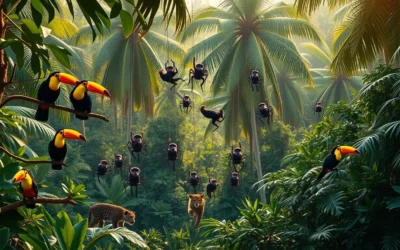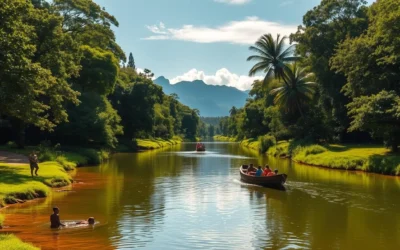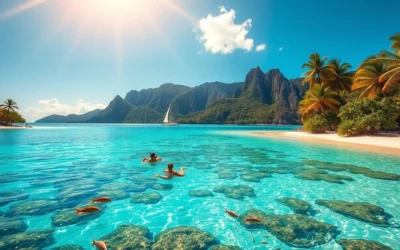✓ Accommodations✓ Flights✓ Rental Cars✓ Tours & Activities ✓ Tours & Activities
When to Visit French Guiana
The dry season (July to November) offers the best weather for exploring French Guiana
The best time to visit French Guiana is during the dry season, from July through November. During these months, you’ll experience less rainfall and humidity, making it ideal for exploring the rainforest and coastal areas. The temperature remains consistently warm year-round, averaging between 75°F and 88°F (24°C-31°C).
If you’re interested in witnessing sea turtles nesting, plan your visit between April and July when leatherback, green, and olive ridley turtles come ashore to lay their eggs. For those who want to experience the vibrant Carnival celebrations, schedule your trip between January and February, when the streets come alive with parades, music, and colorful costumes.
Ready to Plan Your French Guiana Adventure?
Find the best flight deals to Cayenne, French Guiana’s capital city.
Getting to French Guiana
Most international travelers arrive at Félix Eboué Airport (CAY) near Cayenne, the capital city. Air France operates regular flights from Paris, while Air Caraïbes connects French Guiana with Guadeloupe, Martinique, and Haiti. From North America, you’ll typically need to connect through Paris or a Caribbean hub.
If you’re already in South America, Air France and Surinam Airways offer flights from Belém (Brazil) and Paramaribo (Suriname). For the adventurous traveler, it’s also possible to reach French Guiana by boat from neighboring countries, though this requires more planning and time.
Getting Around French Guiana
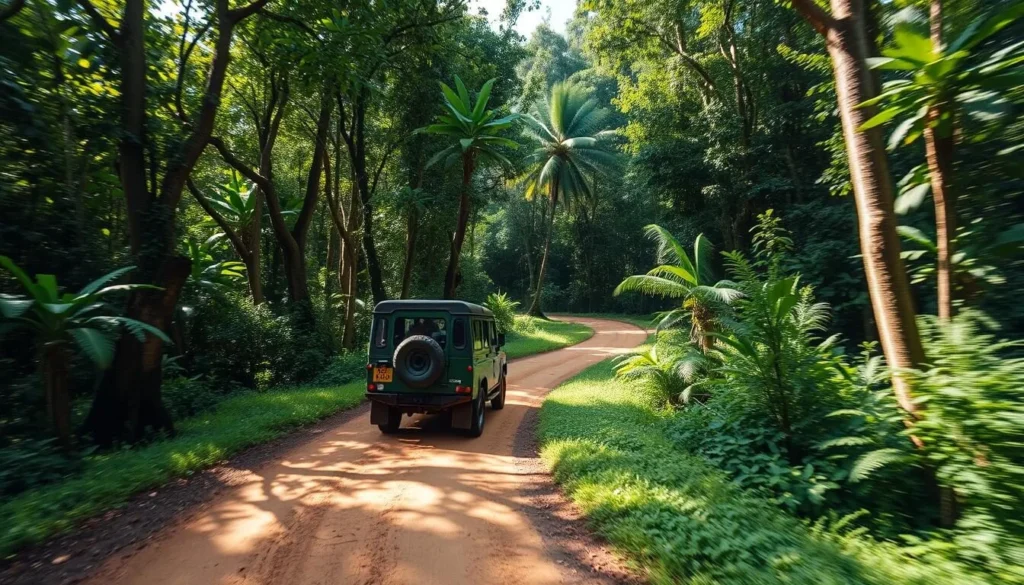
A 4×4 vehicle is essential for exploring beyond the main coastal road
French Guiana has limited public transportation, making car rental the most practical option for exploring the country. The main coastal road (N1) connects most major towns, but many attractions require off-road driving. For this reason, renting a 4×4 vehicle is highly recommended, especially if you plan to venture beyond the main urban areas.
Within Cayenne and other towns, taxis are available but can be expensive. For river travel to remote villages and certain attractions like the Salvation Islands, you’ll need to arrange boat transportation through tour operators or local guides. Some areas, particularly in the interior, are only accessible by small aircraft or canoe.
Explore French Guiana at Your Own Pace
Rent a reliable 4×4 vehicle to reach even the most remote attractions.
Top Attractions in French Guiana
1. Guiana Space Centre (Centre Spatial Guyanais)
Located near Kourou, the Guiana Space Centre is Europe’s primary spaceport and one of the most fascinating attractions in French Guiana. The center offers free guided tours (reservation required) where you can learn about space exploration, view the launch facilities, and visit the Jupiter Control Centre. If you’re lucky enough to be in French Guiana during a launch, you can witness rockets blasting off into space – a truly spectacular sight.
The Space Museum on site provides an educational experience about the history of space exploration and the role of the center in current missions. Tours last approximately three hours and are available in French, though some guides can provide explanations in English.
2. Îles du Salut (Salvation Islands)
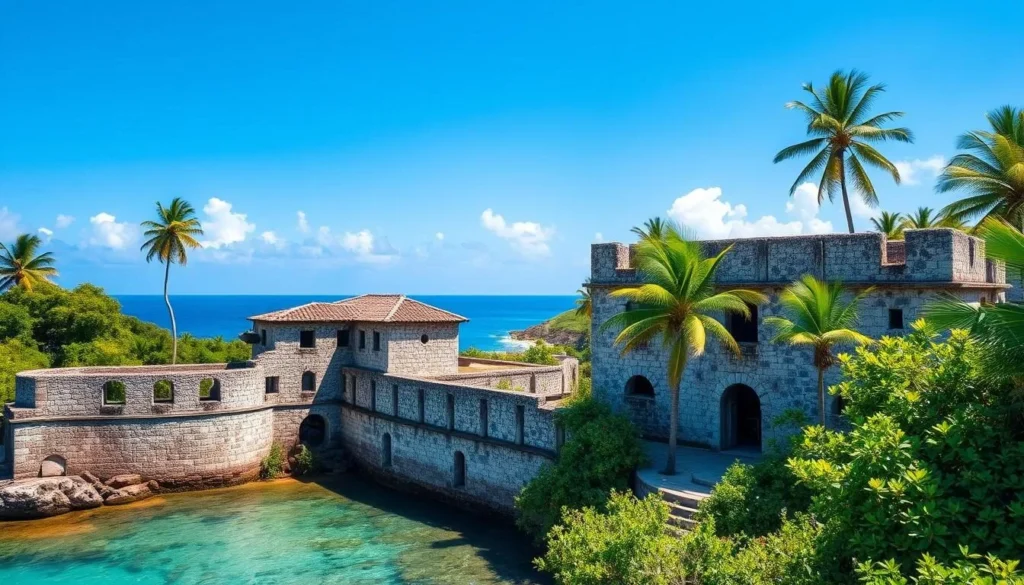
The historic prison buildings on Île Royale tell the story of French Guiana’s penal colony past
The infamous Salvation Islands, located about 11 kilometers offshore from Kourou, were once home to one of history’s most notorious penal colonies, made famous by Henri Charrière’s book “Papillon.” Today, visitors can take boat trips to Île Royale, the largest of the three islands, where former prison buildings have been converted into a hotel and museum.
While exploring the islands, you’ll encounter abundant wildlife including macaws, monkeys, and agouti. Devil’s Island itself (Île du Diable) is closed to the public, but can be viewed from a distance. The islands offer a fascinating glimpse into French Guiana’s dark colonial history while providing beautiful tropical scenery.
3. Hattes Beach (Plages les Hattes)
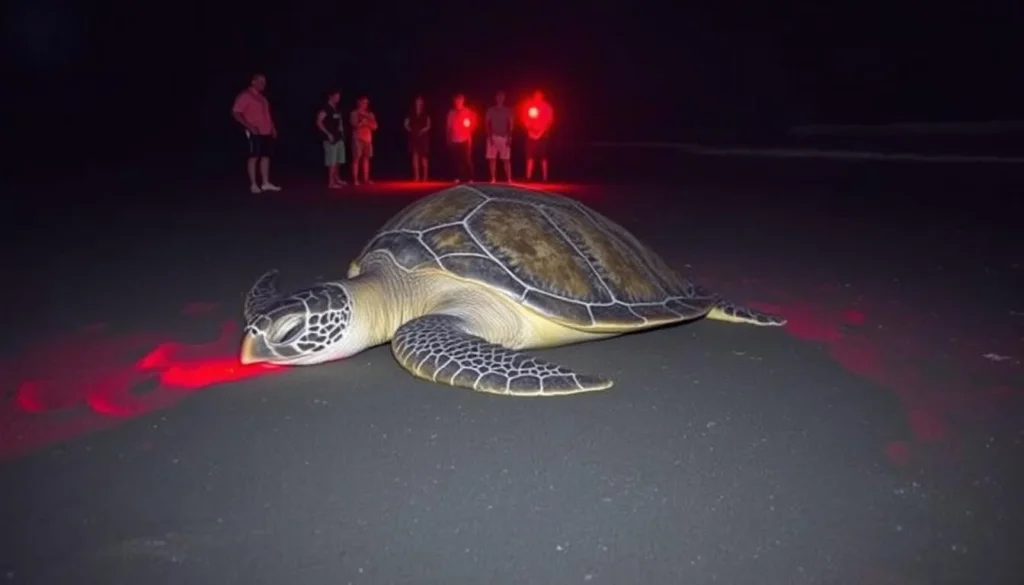
Leatherback turtles come ashore to nest at Hattes Beach between April and July
At Awala-Yalimapo in the northwest corner of French Guiana, Hattes Beach is the world’s most important nesting site for giant leatherback turtles. During the peak season from April to July, you can witness the awe-inspiring sight of dozens of these magnificent creatures lumbering up the beach to lay their eggs. The hatching period occurs between July and September.
Besides leatherbacks, the beach also hosts green turtles and occasionally olive ridley and hawksbill turtles. Before heading to the beach, visit the small local museum to learn about these endangered creatures and the conservation efforts to protect them. The area is also home to Amerindian settlements, offering cultural experiences alongside natural wonders.
Experience French Guiana’s Natural Wonders
Book guided tours to see sea turtles nesting and explore the rainforest with expert guides.
Browse Activities
Nature and Wildlife Experiences
Kaw Marshes and Trésor Nature Reserve
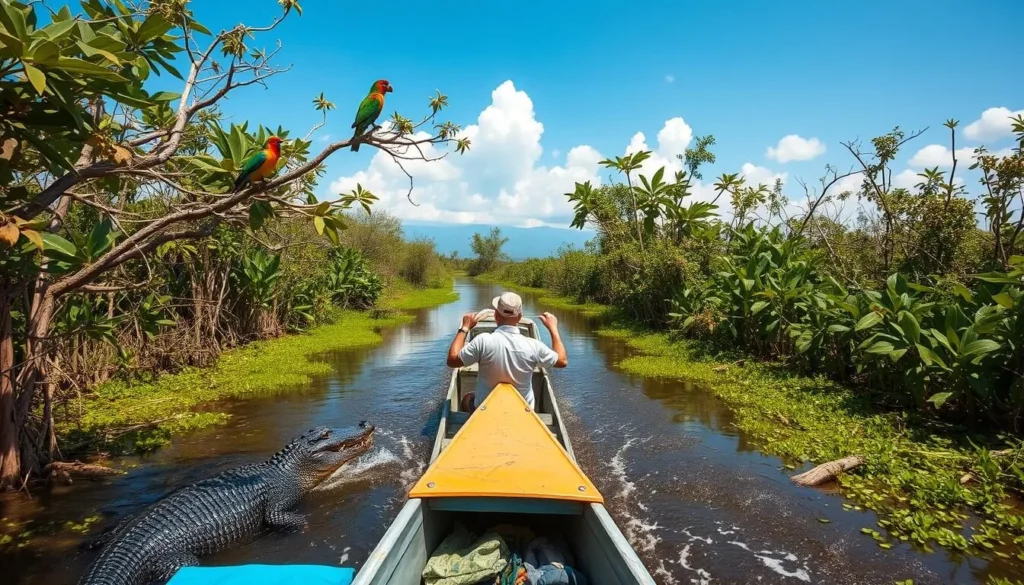
Explore the wildlife-rich Kaw Marshes by boat to spot caimans and exotic birds
The Kaw Marshes, located about 1.5-2 hours from Cayenne, cover thousands of square kilometers of wetlands teeming with wildlife. This vast ecosystem is home to black caimans, a smaller relative of the American alligator, as well as an incredible diversity of birdlife including the striking scarlet ibis.
Guided boat tours are the best way to explore this wilderness, with options ranging from day trips to overnight excursions where you can stay in traditional Amerindian-style huts. Within the Trésor Nature Reserve, which protects a significant portion of the Kaw ecosystem, you can also hike Mont Favard to see petroglyphs and colorful poison dart frogs.
Zoo de Guyane
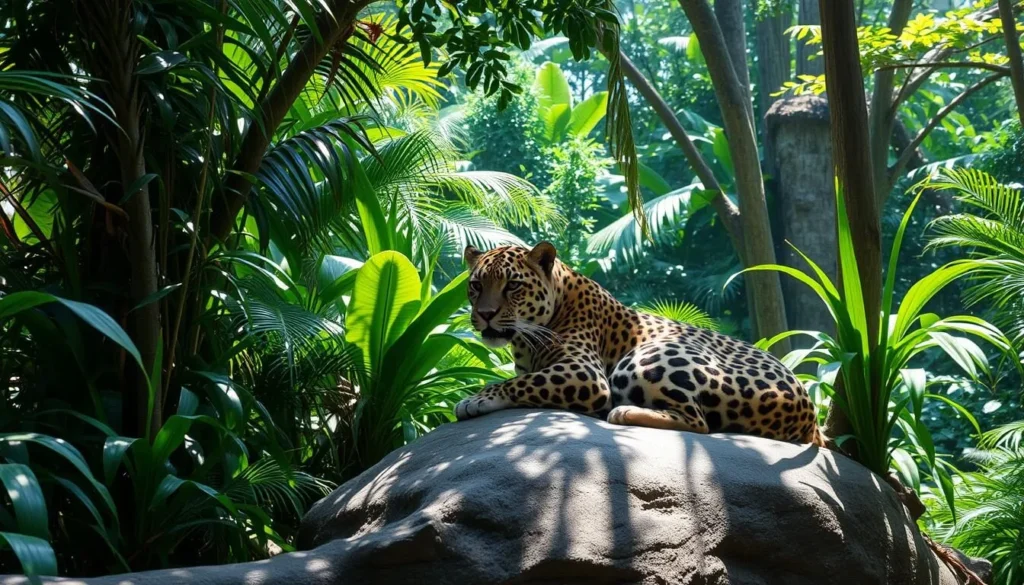
The jaguar exhibit is a highlight at Zoo de Guyane, where animals live in naturalistic habitats
Set deep in the jungle, Zoo de Guyane offers an excellent introduction to the wildlife of French Guiana in naturalistic settings. The zoo houses over 450 animals representing around 75 different species native to the Amazon, including sloths, agoutis, howler monkeys, anteaters, and a variety of birds.
The big cats, particularly the jaguars, are the stars of the show, and visitors should try to catch the feeding times. A highlight of the zoo is the treetop canopy walk, which allows you to experience the rainforest from above. The zoo’s natural setting means that wild animals often wander freely through the grounds, adding to the immersive experience.
Pirogue River Trips
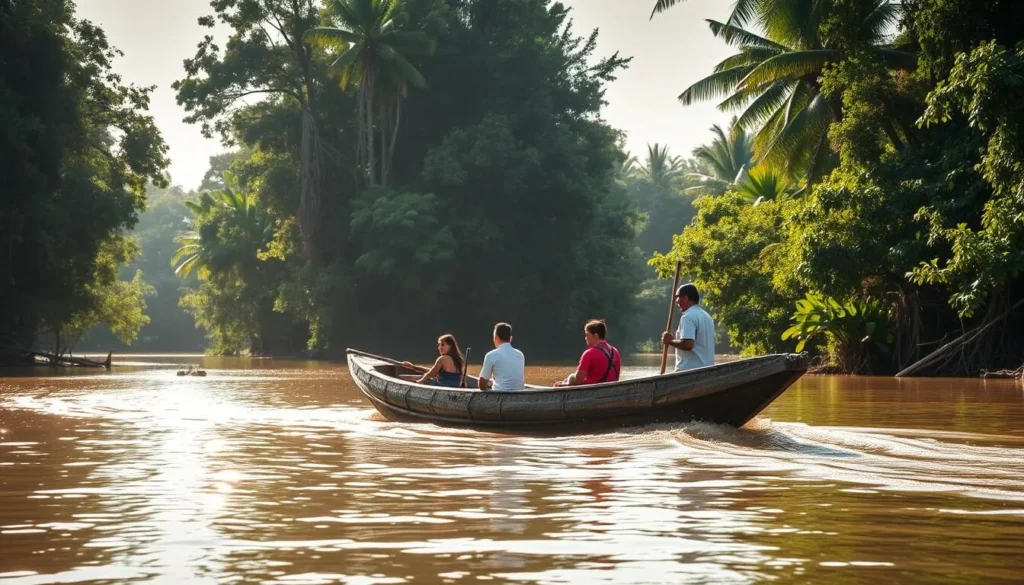
Explore French Guiana’s rivers by traditional pirogue to access remote villages and wildlife areas
One of the most authentic ways to experience French Guiana’s wilderness is by taking a pirogue (traditional dugout canoe) trip along one of the country’s many rivers. The Maroni River, which forms the border with Suriname, is particularly popular for these excursions, offering opportunities to visit Amerindian and Maroon villages and learn about their cultures.
Other notable waterways include the Sinnamary River, which cuts through pristine rainforest; the Oyapock River, rich in gold mining history; and the Approuague River, home to the highest rapids in French Guiana. These river journeys provide unparalleled access to wildlife viewing, with possibilities to spot capybaras, caimans, monkeys, and countless bird species.
Cultural Experiences
Camp de la Transportation
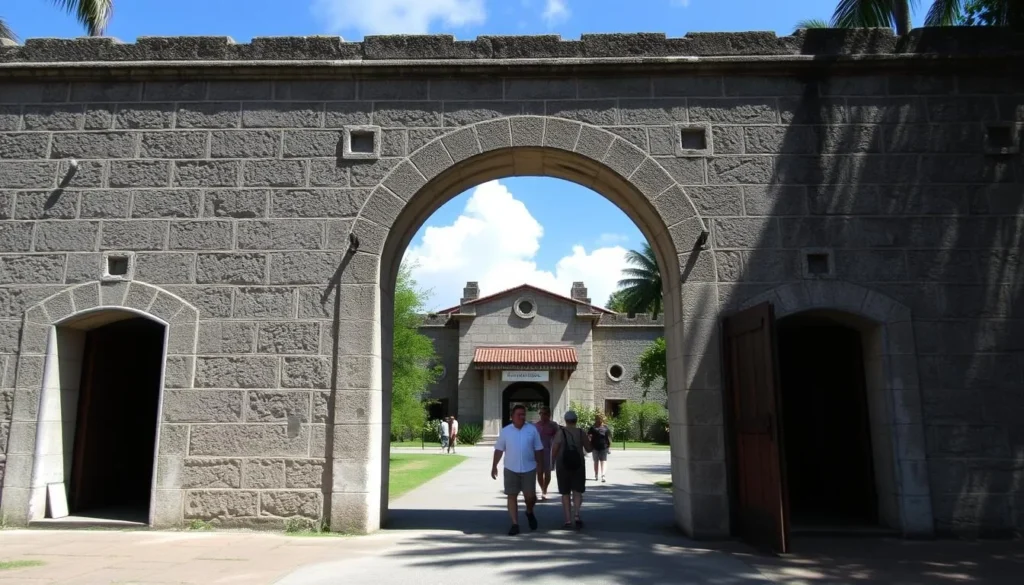
The entrance to Camp de la Transportation, where prisoners like Henri “Papillon” Charrière once passed
In the border town of Saint-Laurent-du-Maroni, the Camp de la Transportation offers a sobering look at French Guiana’s penal colony history. This was the processing center where prisoners, including the famous Henri “Papillon” Charrière, arrived before being transferred to penal colonies throughout the territory.
Visitors can see the rusty shackles, solitary confinement cells, and other remnants of this brutal chapter in history. Look for Papillon’s name engraved in one of the cells. Self-guided tours are free, while French-speaking guides offer more detailed tours for a fee. Be sure to bring water and sun protection, as the site can get very hot.
Cayenne’s Markets and Historic Center
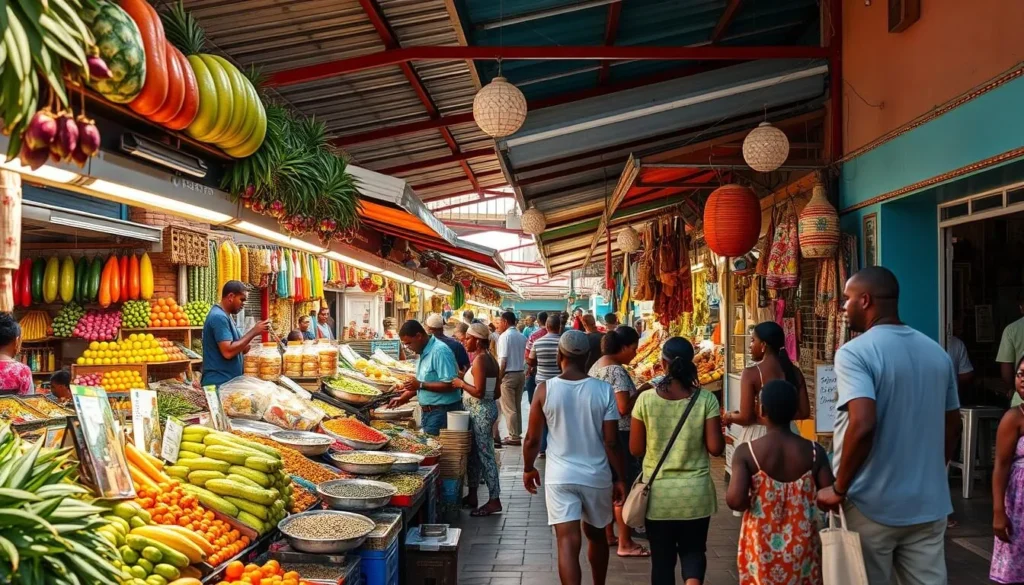
The vibrant market at Place Victor Schoelcher offers a taste of French Guiana’s multicultural flavors
For a taste of local life, head to Cayenne’s main market in Place Victor Schoelcher. Named after the man who ended slavery in French Guiana, this bustling market offers exotic fruits, fragrant spices, Asian-inspired snacks, and locally made handicrafts. It’s the perfect place to sample Vietnamese noodle soup, sip tropical juices, or purchase souvenirs.
While in Cayenne, take time to explore the historic center with its colorful Creole houses, the Place de Palmistes (the city’s liveliest plaza), and the Musée Départemental De Franconie, which provides an overview of the country’s history, flora, and fauna. The yellow cathedral and the ruins of Fort Cépérou are also worth visiting.
Cacao and Hmong Culture

The Hmong village of Cacao offers cultural experiences and beautiful jungle surroundings
On the Comté River south of Cayenne, the village of Cacao provides a fascinating glimpse into the culture of the Hmong people, who were resettled here from Laos in the 1970s. Sunday is the best day to visit when the popular market showcases Hmong embroidery, weaving, and delicious noodle soups.
While in Cacao, visit the insect museum, Le Planeur Bleu, which houses extensive bug and butterfly collections. The village is also a starting point for scenic hikes through the misty jungle or canoe trips on the river, offering a perfect blend of cultural and natural experiences.
Where to Stay in French Guiana
Find comfortable accommodations in Cayenne, Kourou, or near natural attractions.
Unique Experiences
Sleeping in a “Carbet”
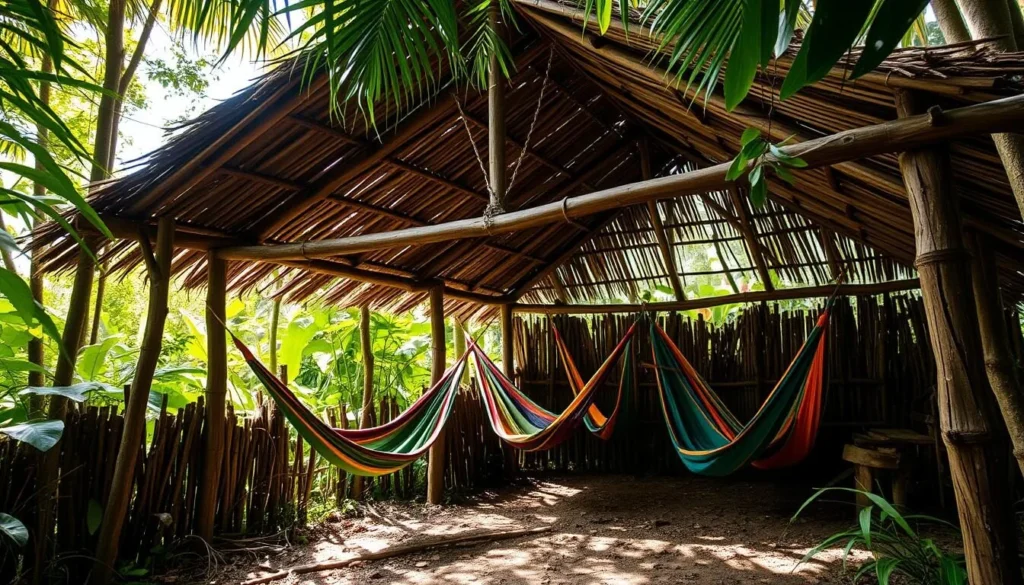
Experience authentic rainforest living by staying in a traditional carbet with hammocks
For a truly immersive experience, spend a night in a “carbet,” a traditional Amerindian shelter in the heart of the Amazon rainforest. These open-air structures typically feature hammocks for sleeping and offer a complete disconnection from modern life. Fall asleep to the sounds of the jungle and wake up surrounded by nature.
Many tour operators offer carbet stays with additional services such as meals prepared with local products, guided excursions, and activities to discover Amerindian culture. For the adventurous, try a “perched carbet” or Canopy Camp, suspended in the treetops for an unobstructed view of the forest canopy.
Carnival Celebrations
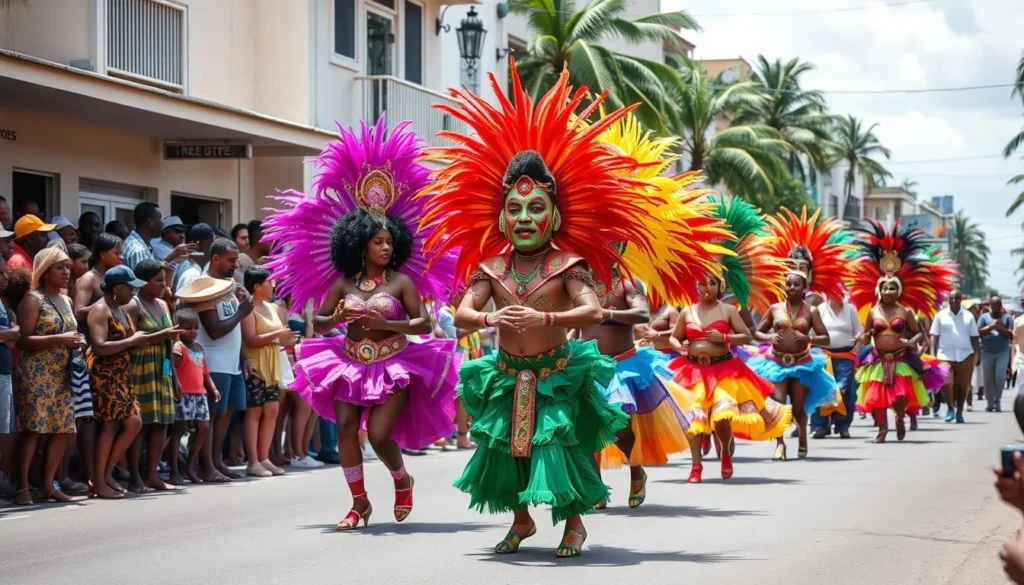
French Guiana’s Carnival is one of the longest in the world, with celebrations every weekend for several months
French Guiana’s Carnival is one of the longest in the world, running from Epiphany (January 6) until Ash Wednesday, with celebrations every weekend. This vibrant festival brings together French, Creole, Brazilian, and other cultural influences in a spectacular display of music, dance, and colorful costumes.
In Cayenne and other towns, you can witness parades featuring traditional characters like the Touloulous (masked women in elaborate dresses) and join in the festivities. Each weekend has different themes and traditions, making it worth experiencing multiple carnival days if your visit coincides with this exciting time.
Practical Information
Local Cuisine
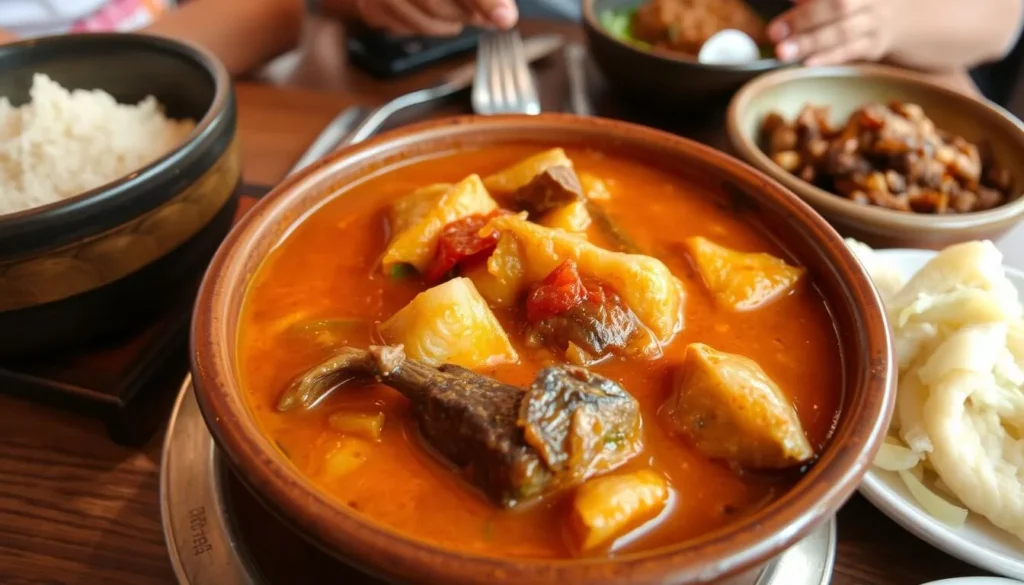
Awara broth, a complex stew made with the paste of the awara fruit, is a must-try local specialty
French Guiana’s cuisine reflects its diverse cultural influences, blending French, Creole, Caribbean, Vietnamese, Chinese, and South American flavors. Popular dishes include Awara broth (a complex stew made with the paste of the awara fruit), fricassee (a simmered dish of meat or fish with vegetables and spices), and colombo (a curry-like dish enhanced with coconut milk).
Seafood features prominently in coastal areas, while game meat is common inland. Don’t miss the opportunity to try bouillon d’aurora (a mix of smoked fish, vegetables, and sometimes chicken) or pimentade (fish or meat marinated in a lemony chili sauce). Local markets are excellent places to sample authentic dishes and tropical fruits.
Safety and Health
French Guiana is generally safe for travelers, with relatively low crime rates. However, standard precautions are advised, especially in urban areas: avoid displaying valuables, be cautious after dark, and keep important documents secure. The remote nature of many attractions means that having travel insurance with evacuation coverage is highly recommended.
Health-wise, yellow fever vaccination is required for entry. Malaria prevention is recommended, particularly if visiting inland areas. The territory has good healthcare facilities by regional standards, with the best medical care available in Cayenne. Bring insect repellent, sun protection, and any necessary medications, as pharmacies may have limited supplies outside major towns.
Language and Communication
French is the official language of French Guiana, and English is not widely spoken outside of tourist areas. Learning basic French phrases will greatly enhance your experience. Creole is also commonly spoken, along with indigenous languages in remote communities. In some areas near the Brazilian border, Portuguese may be understood.
Mobile coverage is good in coastal areas and towns but can be non-existent in the interior. Wi-Fi is available in most hotels in Cayenne and Kourou but may be limited or unavailable in more remote locations. Consider renting a local SIM card for better connectivity during your stay.
Ready for an Unforgettable Adventure?
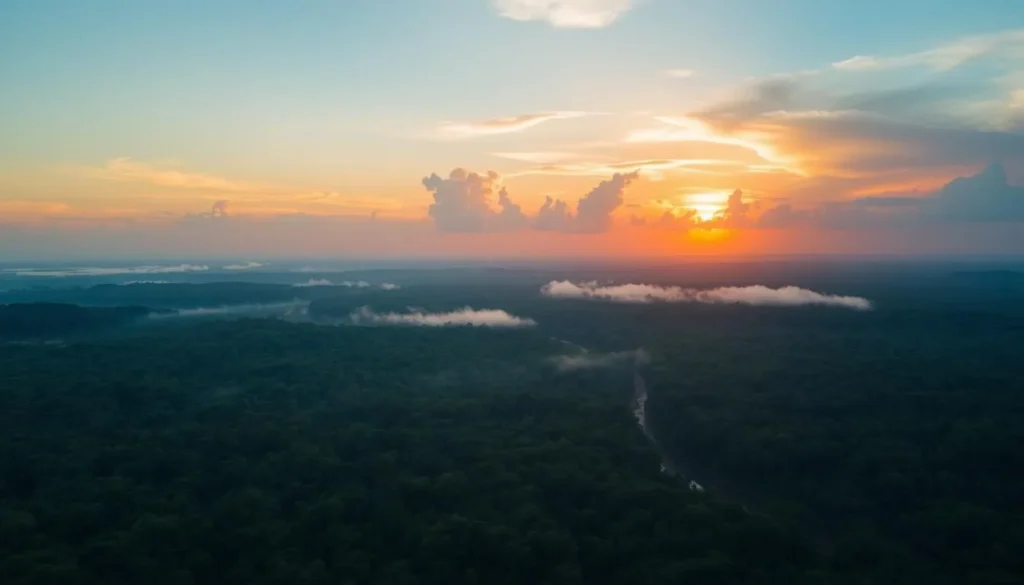
French Guiana offers a rare combination of pristine wilderness and European infrastructure
French Guiana represents a truly unique travel destination, where European space technology meets pristine Amazon rainforest. From witnessing rocket launches and exploring notorious prison islands to observing nesting sea turtles and immersing yourself in diverse cultures, this overseas department of France offers experiences that can’t be found anywhere else in the world.
While traveling through French Guiana can be challenging at times, particularly for those who don’t speak French, the rewards are immense for adventurous travelers willing to step off the beaten path. Whether you’re a nature enthusiast, history buff, or cultural explorer, French Guiana’s remarkable blend of wilderness and heritage awaits your discovery.
Start Planning Your French Guiana Adventure Today
Find flights, accommodations, and activities for an unforgettable experience.
Browse Activities
The above is subject to change.
Check back often to TRAVEL.COM for the latest travel tips and deals.

